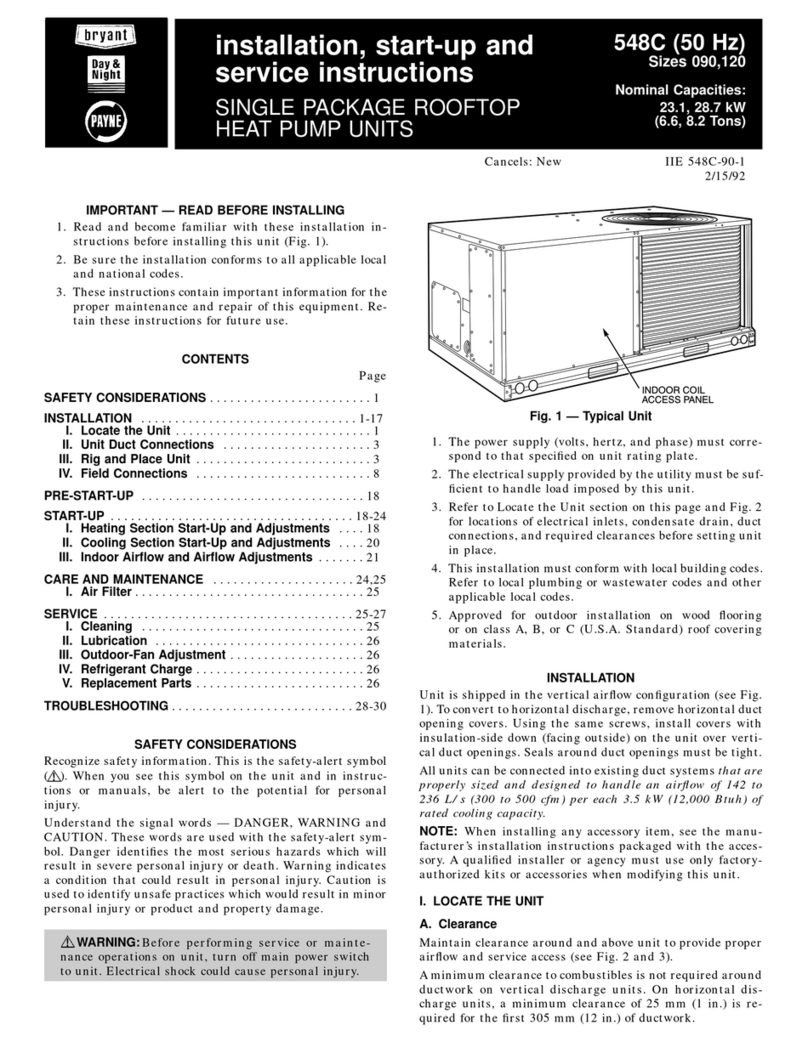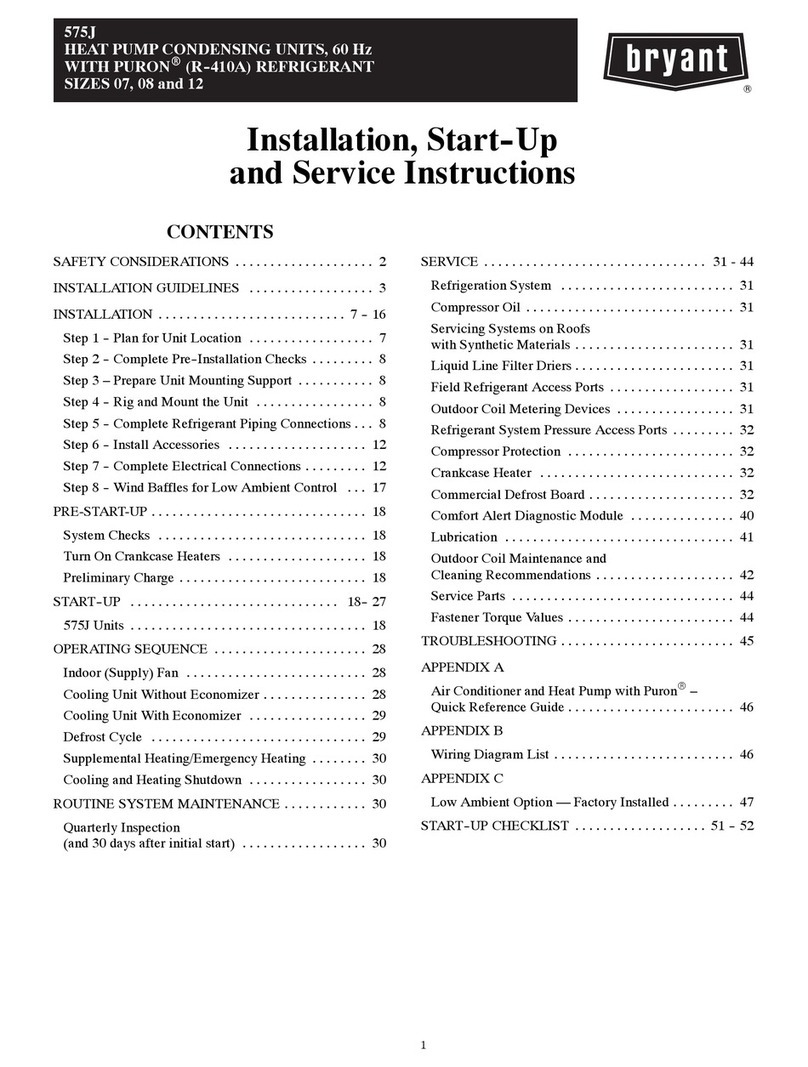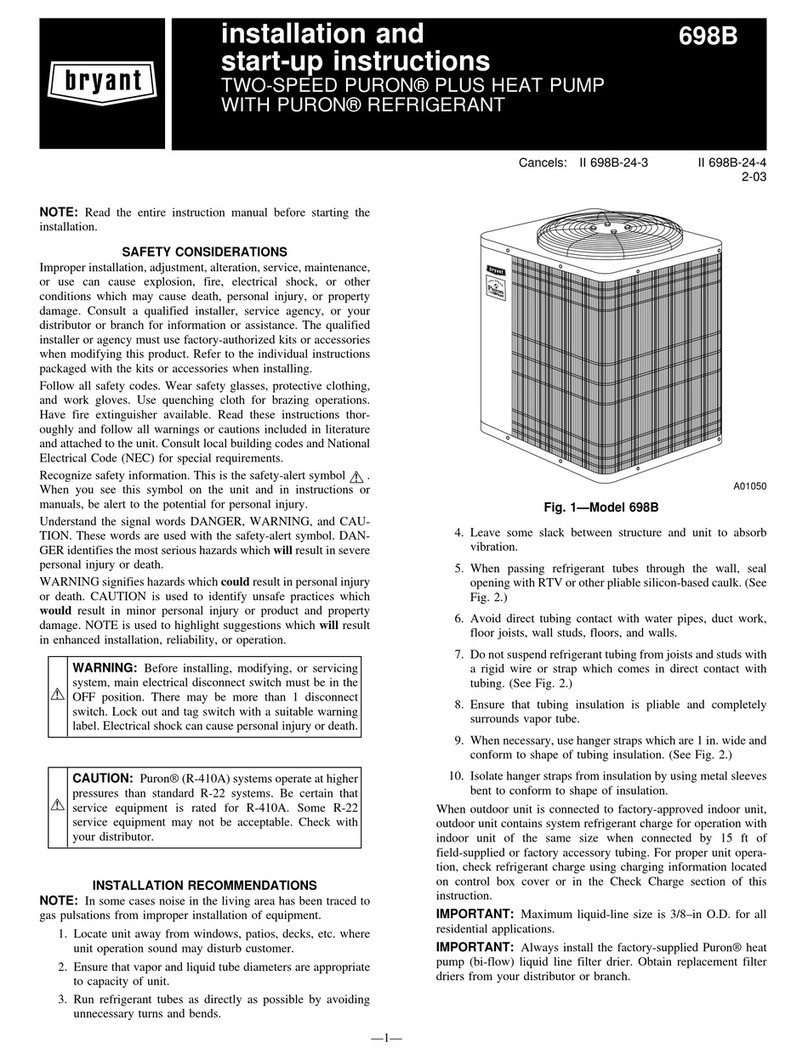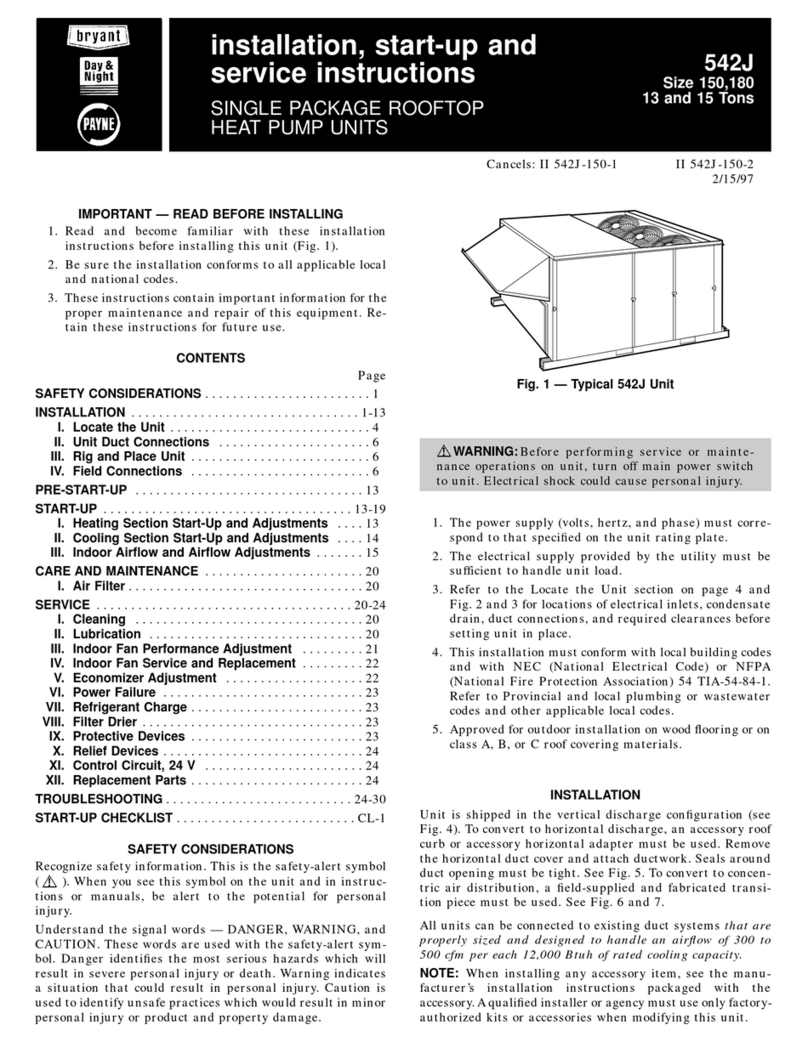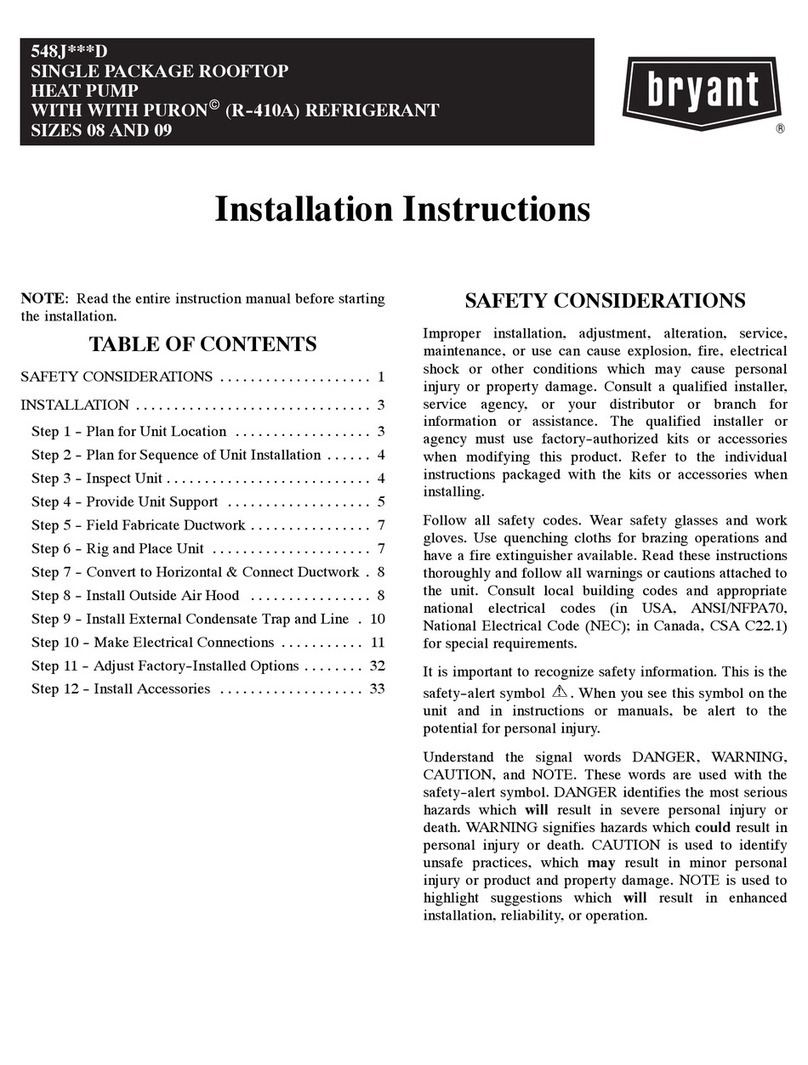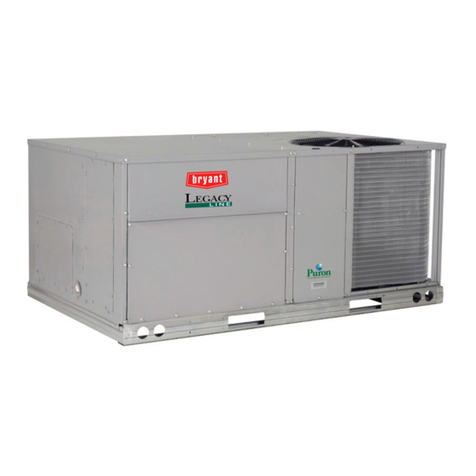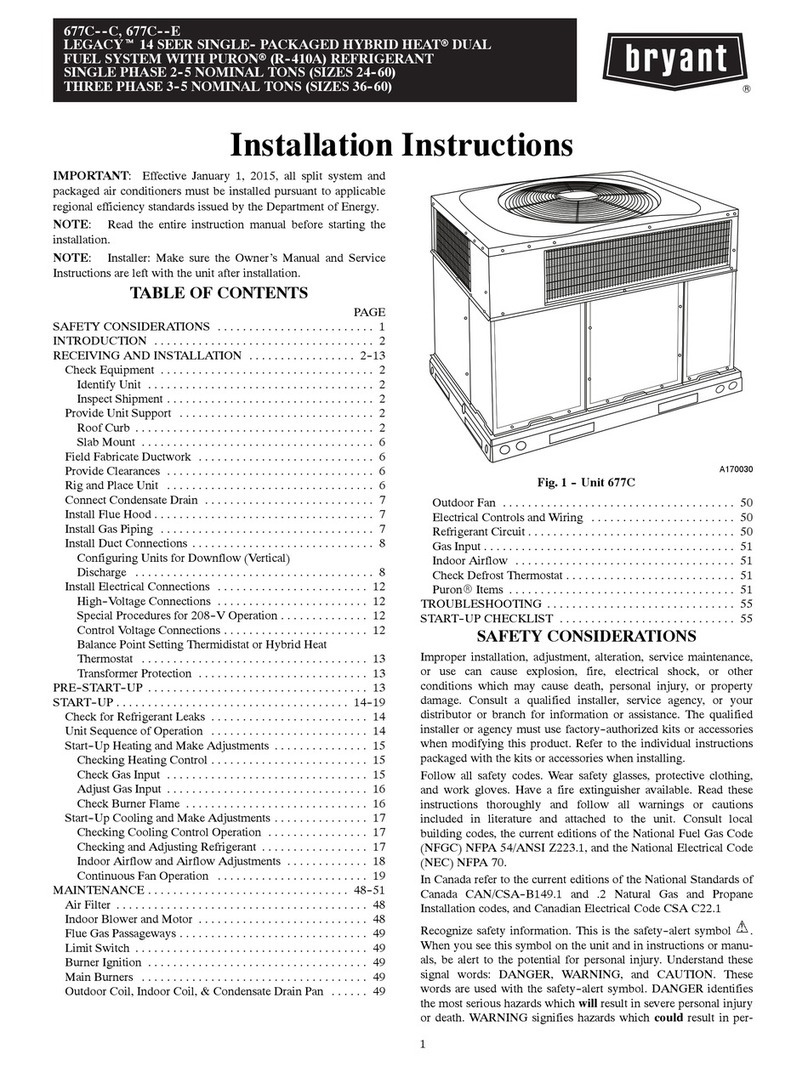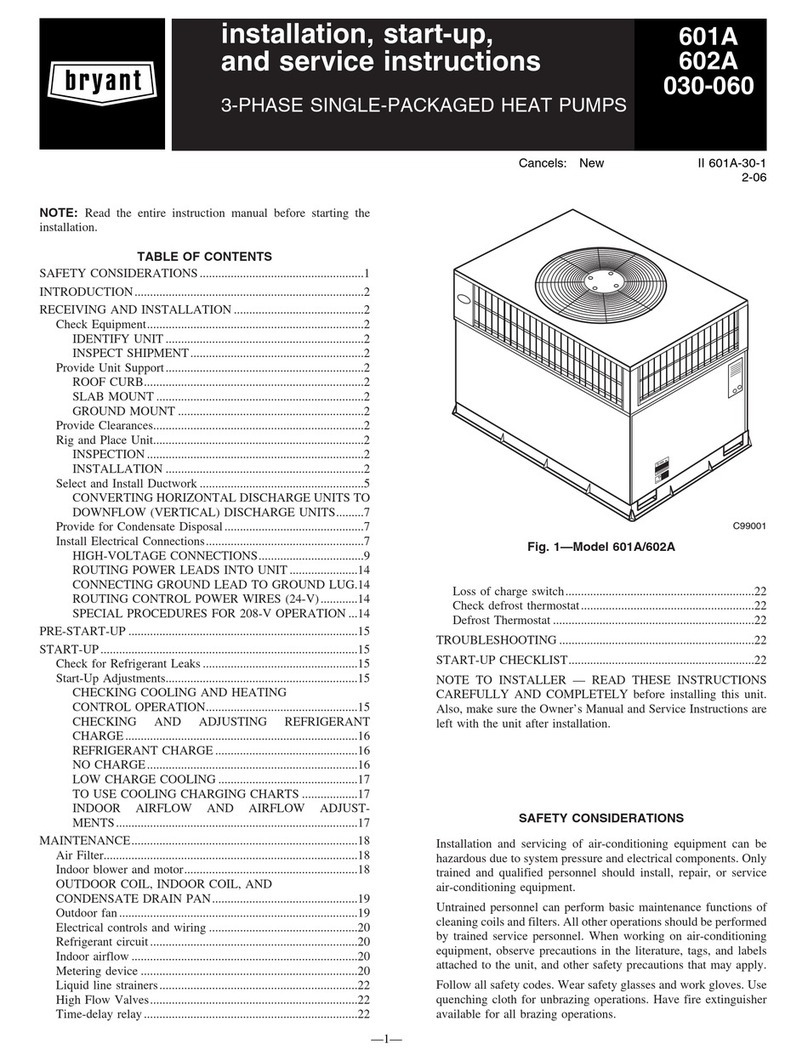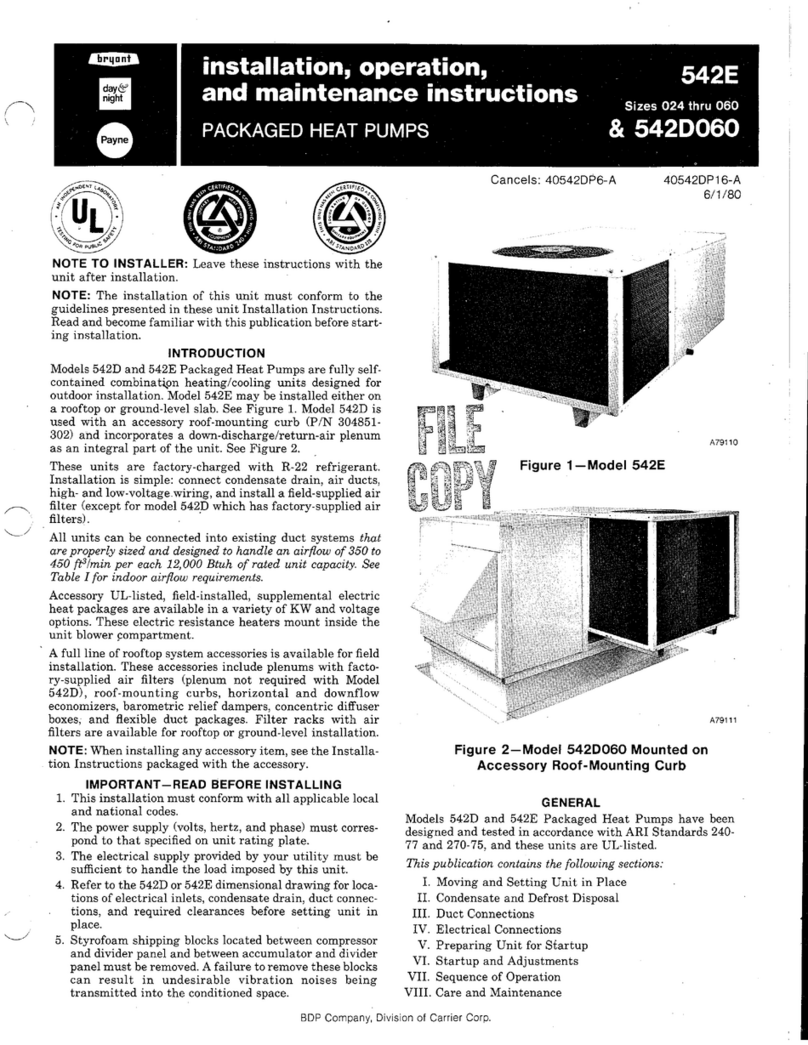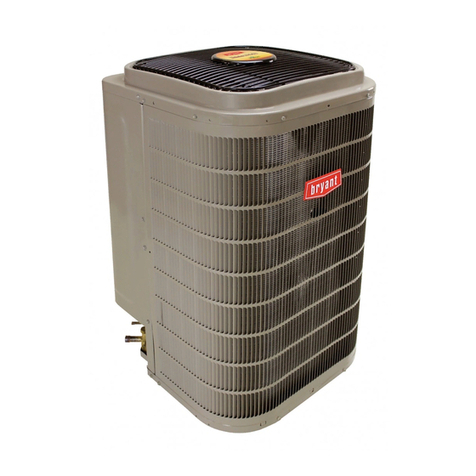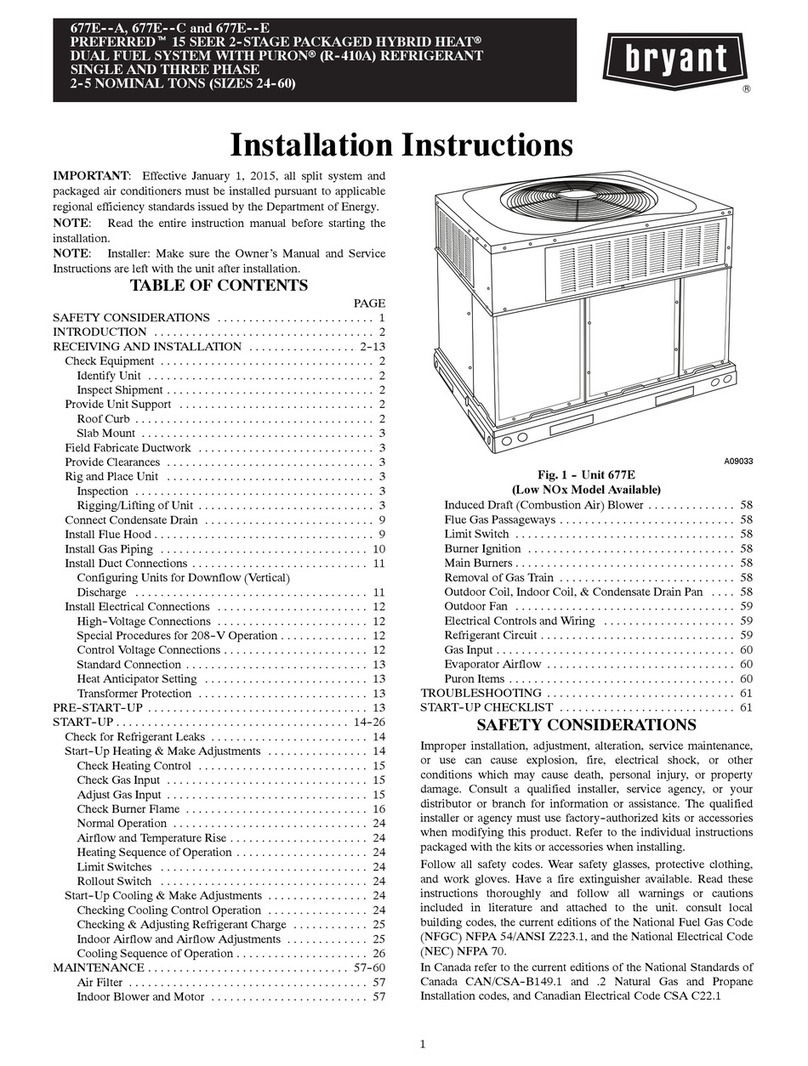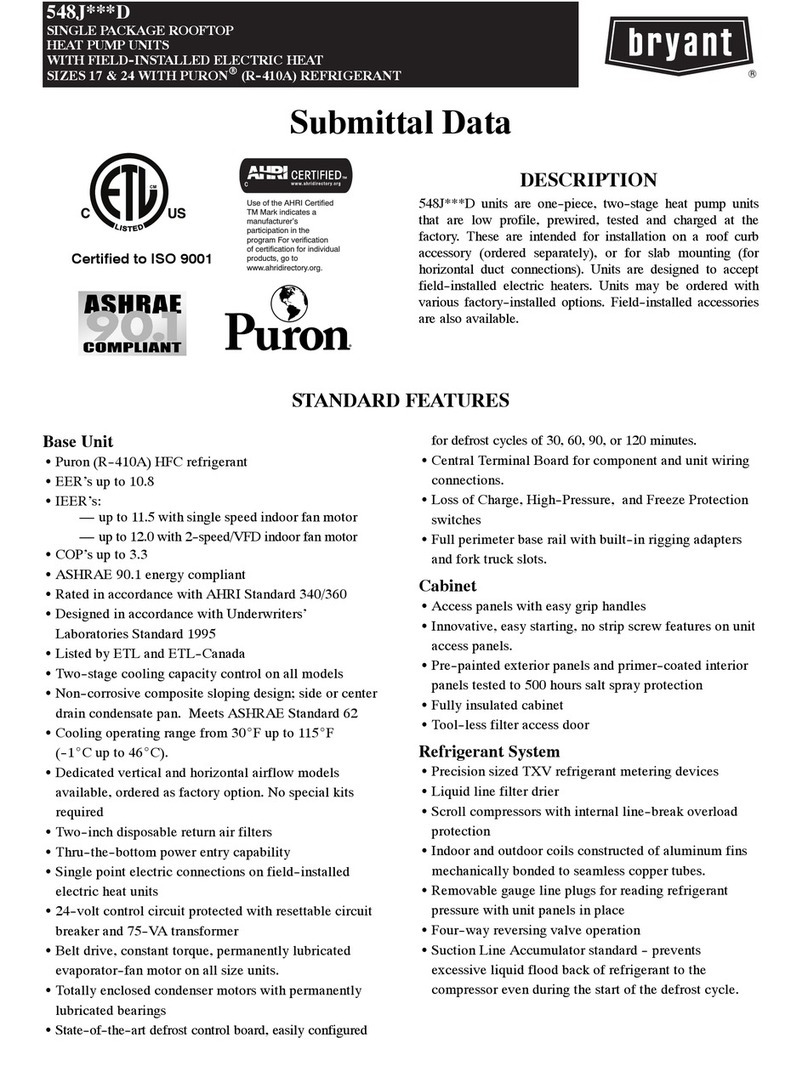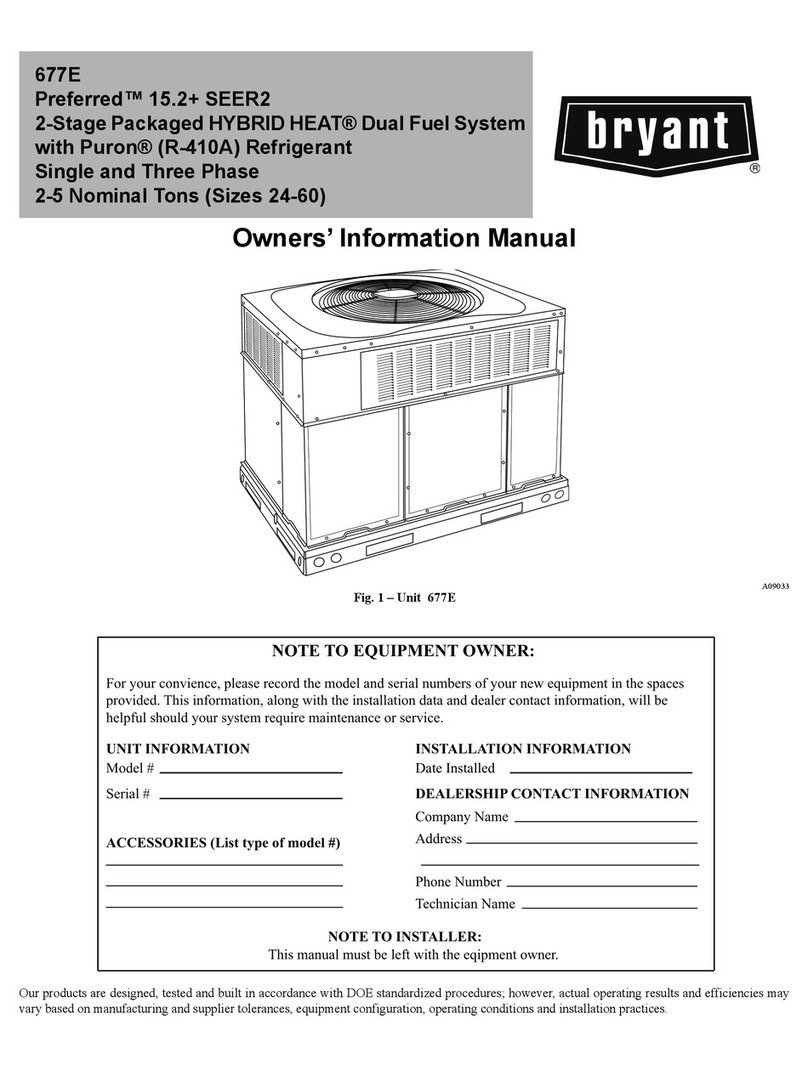
10
NOTE: The model plug takes priority over factory model
information input at the factory. If the model plug is removed after
initial power up, the unit will operate according to the last valid
model plug installed, and flash the appropriate fault code
temporarily.
High Pressure Switch Protection
The outdoor unit is equipped with high pressure switch. If the
control senses the opening of a high pressure switch, it will
respond as follows:
1. De--energize the contactor.
2. Keep the outdoor fan operating for 15 minutes.
3. Display the appropriate fault code (see Table 7).
4. After a 15 minute delay, if there is a call for cooling or heat-
ing and HPS is reset, the contactor is energized.
5. If HPS has not closed after a 15 minute delay, the outdoor
fan is turned off. If the open switch closes anytime after the
15 minute delay, then resume operation with a call for cool-
ing or heating at a temporary reduced capacity.
6. After each HPS trip fault, the compressor will operate at a
reduced RPM/Capacity. When the HPS trips at the mini-
mum RPM, the unit will be locked out on system malfunc-
tion code 84 for 4 hours.
7. In the event of a high--pressure switch trip or high--pressure
lockout, check the refrigerant charge, outdoor fan operation,
and outdoor coil (in cooling) for airflow restrictions, or in-
door airflow in heating.
Low Pressure Protection
The outdoor unit is equipped with low pressure transducer. If the
control senses a low pressure per the table below, it wil respond as
follows:
Cooling Low Prssure (3 minute operation) Cool Mode <= 55 psig
Low Pressure (instantaneous) <13 psig
1. Display fault code 32 on Status LED and wall control.
2. If a demand persists after the 15--minute delay and the
pressure has reached the operation level, then resume opera-
tion. Reset the 15 minute timer, clear the displayed fault
code and communicate cleared error to the wall control.
Status LED reverts to operation code display.
3. If a demand persists after the 15 minute delay but the pres-
sure has not recovered, turn off the ODF. If the pressure
recovers any time after the 15 minute delay, resume opera-
tion. Reset the 15 minute timer, clear the displayed error
code and communicate cleared error to the wall control.
Status LED reverts to operation code display.
4. If a pressure drops below the instantaneous level three (3)
consecutive times, lock out operation for 4 hours and dis-
play the system malfunction code 83 and communicate
lockout status to the wall control. The trip counter will reset
to zero if 15 minutes of successful operation occurs before
the 3rd trip is recorded.
5. In the event of a low pressure trip or low pressure lockout,
check the refrigerant charge and indoor airflow.
Brown--Out Protection
If the line voltage is less than 187v for at least 4 seconds, the
contactor and fan relay are de--energized. Compressor and fan
operation are not allowed until voltage is a minimum of 190v. The
control will flash the appropriate fault code (see Table 7).
230V Line (Power Disconnect) Detection
If there is no 230v at the contactor when the indoor unit is powered
with a cooling or heating demand, the appropriate fault code is
displayed. Verify the disconnect is closed and 230v wiring is
connected to the unit.
Inverter Voltage Sensing
The control board senses the presence or absence of 230 V through
the feedback from inverter. The control monitors the high voltage
to the inverter. Voltage should be present anytime the contactor is
energized and voltage should not be present when the contactor is
de--energized.
Temperature Thermistors
Thermistors are electronic devices which sense temperature. As the
temperature increases, the resistance decreases. Thermistors are
used to sense outdoor air (OAT), coil temperature (OCT) and the
suction line thermistor (OST) located between the reversing valve
and the accumulator.
Refer to Table 4 and Fig. 10 for resistance values versus
temperature.
Table 4 – Resistance Values versus Temperature
TEMPERATURE RESISTANCE (ohms)
25.0° C (77.0° F) 10.0 + / - 2.3%
0.0° C (32.0° F) 32.6 + / - 3.2%
-28.0° C (-18.4° F) 85.5 + / - 3.4%
0
10
20
30
40
50
60
70
80
90
0 20 40 60 80 100 120
TEMPERATURE (DEG. F)
RESISTANCE (KOHMS)
THERMISTOR CURVE
A91431
Fig. 10 -- Thermistor Resistance Versus Temperature
If the outdoor air or coil thermistor should fail, the control will
flash the appropriate fault code (see Table 7.)
IMPORTANT: The outdoor air thermistor, coil thermistor and
suction thermistor should be factory mounted in the final
locations. Check to ensure thermistors are mounted properly
(See Fig. 11, 12 and 13).
Thermistor Sensor Comparison
The control continuously monitors and compares the outdoor air
temperature sensor and outdoor coil temperature sensor to ensure
proper operating conditions. The comparison is:
SIn cooling if the outdoor air sensor indicates 10_F(5.6_C)
warmer than the coil sensor (or) the outdoor air sensor indicates
20_F(11_C) cooler than the coil sensor, the sensors are out
of range.
If the sensors are out of range, the control will flash the appropriate
fault code as shown in Table 7.
The thermistor comparisons are not performed during low ambient
cooling or defrost operation.
Failed Thermistor Default Operation
Factory defaults have been provided in the event of failure of
outdoor air thermistor (OAT) and/or outdoor coil thermistor
(OCT).
If the OAT sensor should fail, low ambient cooling will not be
allowed and the one--minute outdoor fan off delay will not occur.
Defrost will be initiated based on coil temperature and time.
If the OCT sensor should fail, low ambient cooling will not be
allowed.
Count the number of short and long flashes to determine the
appropriate flash code. Table 7 gives possible causes and actions
related to each error.
